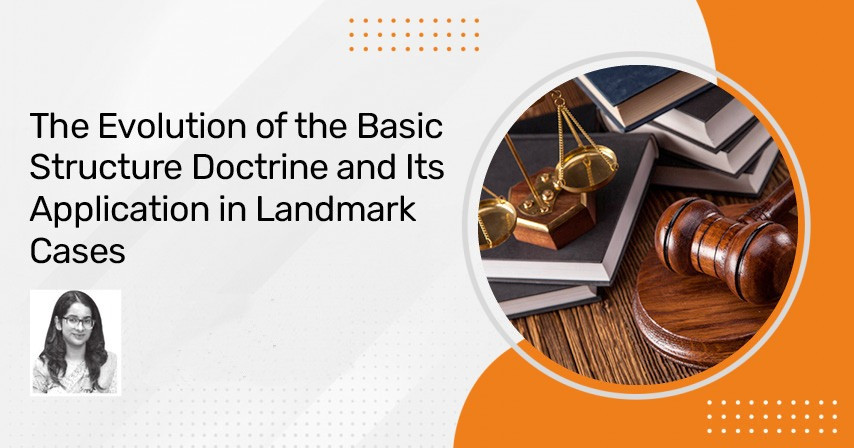
The Basic Structure Doctrine is one of the most significant judicial innovations in Indian constitutional law. It serves as a safeguard against arbitrary constitutional amendments by ensuring that certain fundamental principles remain inviolable. The doctrine has evolved through various landmark judgments and continues to shape India's constitutional framework.
Origin of the Basic Structure Doctrine
The doctrine was first articulated in Kesavananda Bharati v. State of Kerala (1973), where the Supreme Court ruled that while Parliament has the power to amend the Constitution under Article 368, it cannot alter its basic structure. This ruling placed limitations on legislative authority, preventing any amendment that could dilute the core principles of the Constitution.
Evolution Through Landmark Cases
1. Shankari Prasad Case (1951) & Sajjan Singh Case (1965)
Initially, the Supreme Court upheld Parliament’s absolute power to amend the Constitution. In Shankari Prasad v. Union of India (1951) and Sajjan Singh v. State of Rajasthan (1965), the Court ruled that amendments made under Article 368 could not be challenged, even if they affected fundamental rights.
2. Golaknath Case (1967)
In I.C. Golaknath v. State of Punjab (1967), the Supreme Court took a different approach. It held that Parliament could not amend fundamental rights, stating that such amendments would require a Constituent Assembly. This decision created a conflict between the judiciary and the legislature, leading to the enactment of the 24th Amendment (1971), which restored Parliament’s authority to amend the Constitution, including fundamental rights.
3. Kesavananda Bharati Case (1973)
The landmark judgment in Kesavananda Bharati v. State of Kerala (1973) struck a balance between parliamentary supremacy and constitutional integrity. The Supreme Court ruled that Parliament could amend any part of the Constitution but must not alter its basic structure. Though the Court did not provide an exhaustive list of what constitutes the basic structure, it included judicial review, democracy, secularism, federalism, and the supremacy of the Constitution as essential features.
4. Indira Gandhi Case (1975)
During the Emergency period, the 42nd Amendment (1976) attempted to curtail judicial review and declared that constitutional amendments could not be challenged in court. However, in Indira Nehru Gandhi v. Raj Narain (1975), the Supreme Court struck down clauses that violated the basic structure, particularly those affecting free and fair elections and judicial review.
5. Minerva Mills Case (1980)
In Minerva Mills v. Union of India (1980), the Supreme Court reaffirmed the Basic Structure Doctrine by striking down amendments that gave Parliament unlimited power to amend the Constitution. The Court held that harmony between Fundamental Rights and Directive Principles was a fundamental aspect of the Constitution’s basic structure.
6. Waman Rao Case (1981)
This case clarified that all amendments made before Kesavananda Bharati (1973) were valid, but future amendments would be subject to the Basic Structure Doctrine.
7. SR Bommai Case (1994)
In S.R. Bommai v. Union of India (1994), the Supreme Court expanded the scope of the Basic Structure Doctrine, ruling that secularism and federalism were essential components. It also emphasized that the President’s power to dismiss state governments under Article 356 was subject to judicial review.
8. Keshuananda Bharati’s Impact on Recent Cases
The NJAC Judgment (2015) reaffirmed judicial independence as part of the basic structure. The Court struck down the National Judicial Appointments Commission (NJAC), stating that it violated the separation of powers.
Significance of the Basic Structure Doctrine
The doctrine acts as a constitutional safeguard, ensuring that Parliament does not misuse its amendment power. It protects democratic principles and prevents authoritarian rule. Moreover, it strengthens the doctrine of judicial review, allowing courts to strike down unconstitutional amendments.
Conclusion
The Basic Structure Doctrine remains one of the most crucial legal principles in India. It ensures that while the Constitution is adaptable to change, its core principles remain intact. Through various landmark judgments, the Supreme Court has continuously reaffirmed this doctrine, preserving the essence of India’s democracy, federalism, and judicial independence. As the country evolves, the doctrine will continue to serve as a cornerstone of constitutional interpretation.
